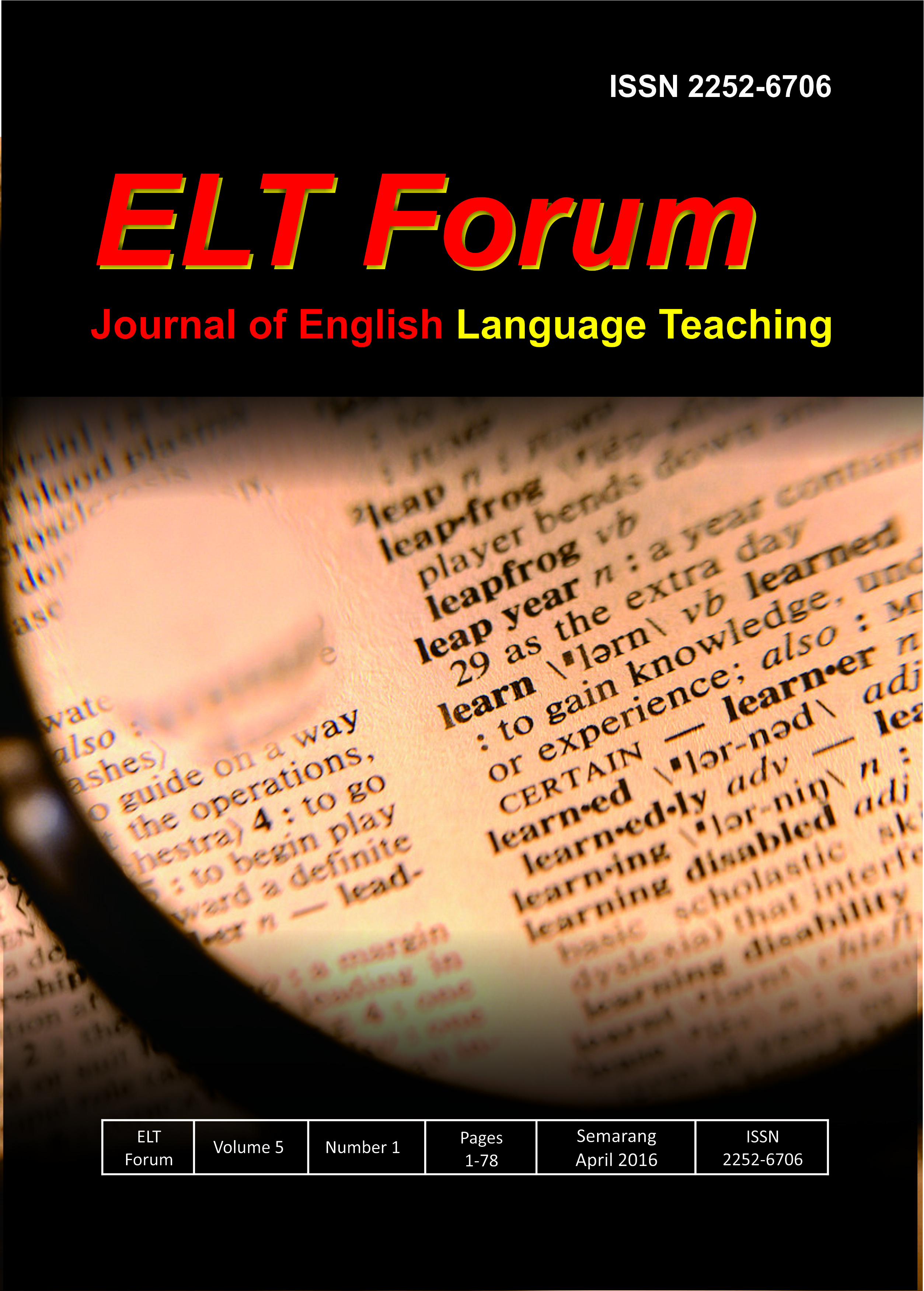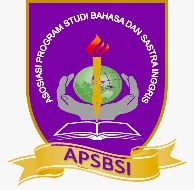THE EFFECTIVENESS OF USING TWO STAY TWO STRAY AS A TECHNIQUE IN IMPROVING STUDENTS SPEAKING ABILITY (A Quasi Experimental Research at the Tenth Grade Students of SMA Taruna Nusantara Magelang in the Academic Year of 2015/2016)
Abstract
This research is about using Two Stay Two Stray technique for teaching speaking in senior high school. Two Stay Two Stray is an interactive technique that encourages the participants to be more creative and active in group work. This research aimed to find out whether or not Two Stay Two Stray technique is effective to teach speaking at the tenth graders of SMA Taruna Nusantara Magelang in the academic year of 2015/2016. The research design used was quasi experimental research. Tests and observation checklist were used as the instruments to collect the data and information. Before conducting the experiment, try out was given to 30 students of X-7 to make sure that they were valid and reliable. The researcher used class X-1 as the experimental group and X-2 as the control group. Both classes were in the same level, background, and competence. The result of the pre-test showed that the mean score of the experimental group was 62.27 and the mean score of the control group was 60.47. After the treatment, the mean score of experimental group was 83. 86 and the mean score of control group was 77.86. It could be seen that there was an improvement after the treatments dealing with their speaking ability. From the t-test computation of the post-test score, the t-value was higher than t-table (t-value > t-table = 4.167 > 2.750). Therefore, the null hypothesis was rejected and the working hypothesis was accepted. It means that there is a significant difference between the experimental group and the control group. The results indicate that Two Stay Two Stray technique is effective in improving the speaking ability at the tenth graders of SMA Taruna Nusantara Magelang in the academic year of 2015/2016. It is suggested that the findings of this study could be applied regularly and continously or developed by the English teachers to have a better speaking teaching.References
Arikunto, S. 2002. Dasar-Dasar Evaluasi Pendidikan. Jakarta: Bumi Aksara
Arikunto, S. 2006 Prosedur Penelitian Suatu Pendekatan Praktik. (Rev VI). Jakarta: Rineka Cipta.
Arsyanti, Y. 2014. Talking Chip Technique to Improve Students’ Speaking Ability and Motivation (Classroom Action Research at the Eighth Grade of SMP Negeri 6 Pekalongan in the Academic Year 2013/2014). Final Project. English Department, Faculty of Languages and Arts, Semarang State University
Fitriani, Y. 2014. The Use of Two-Stay-Two-Stray Technique to Improve Students’ Motivation in Learning Reading Comprehention (Experimental Research of Eight Grade Students of SMP Negeri 01 Petarukan in the Academic Year of 2013/2014). Final Project. English Department. The Faculty of Languages and Arts of Semarang State University
Kagan, S. 1994. Cooperative Learning. San Clamente, CA: Kagan Publishing
Temerová, L. 2007. How to Improve Students’ Communicative Skills. Thesis. Department of English Language and Literature, Faculty of Education, Masaryk University Brno
Thornbury, S. 2005. How to Teach Speaking. New York: Longman
Tsou, W. 2005. ‘Improving Speaking Skill through Oral Classroom Participation’ Foreign Language Annals Vol. 38 No. 1, pp. 46-55
Zanwar, S. 2014. The Use of Jigsaw Technique to Improve Student’s Speaking Ability in Junior High School (The Case of the Eighth Grade Students of “SMP N†1 Tembarak in the academic year of 2013/ 2014). Final Project. English Department. Faculty of Languages and Arts. Semarang State University



_.jpg)
_.jpg)




